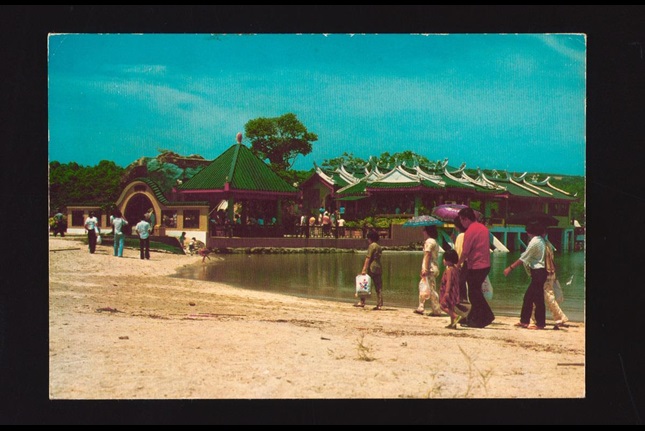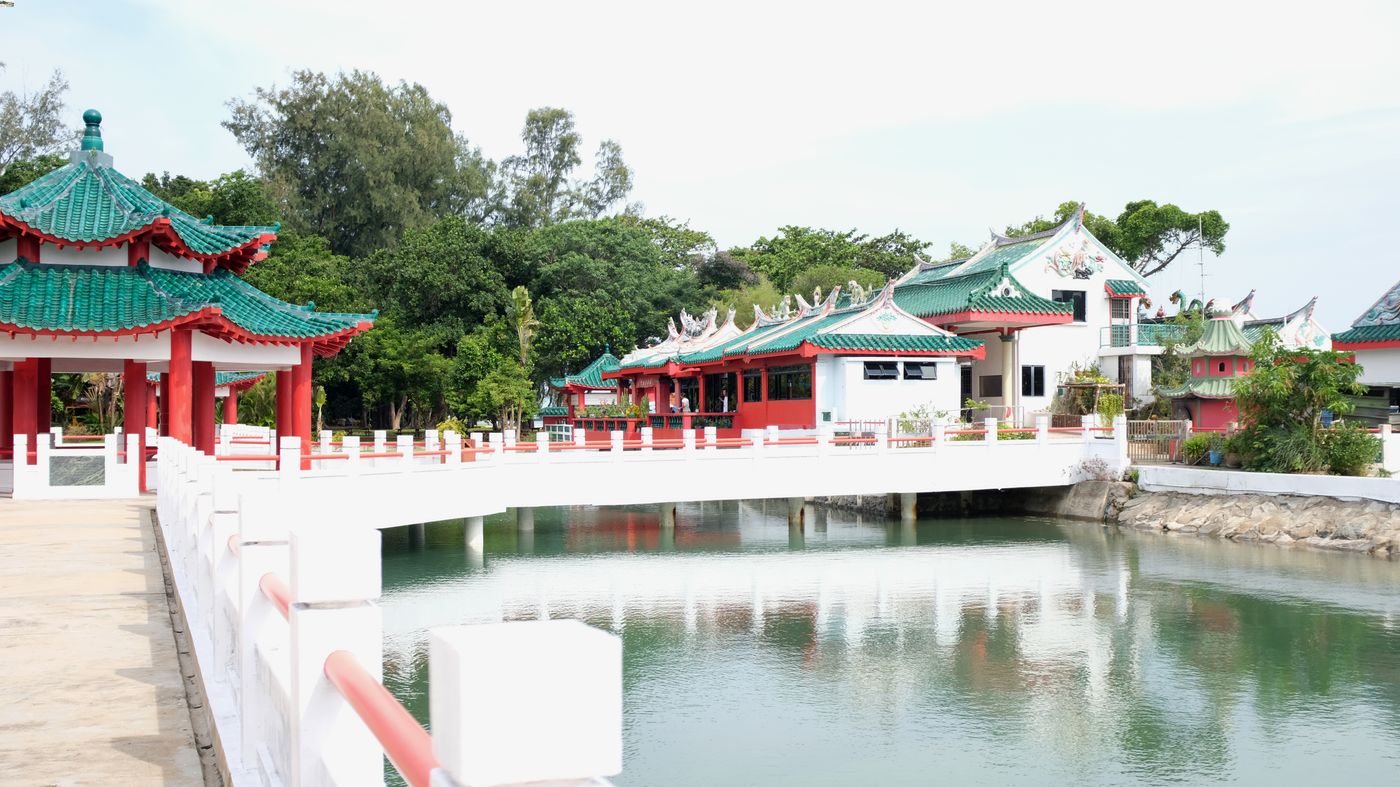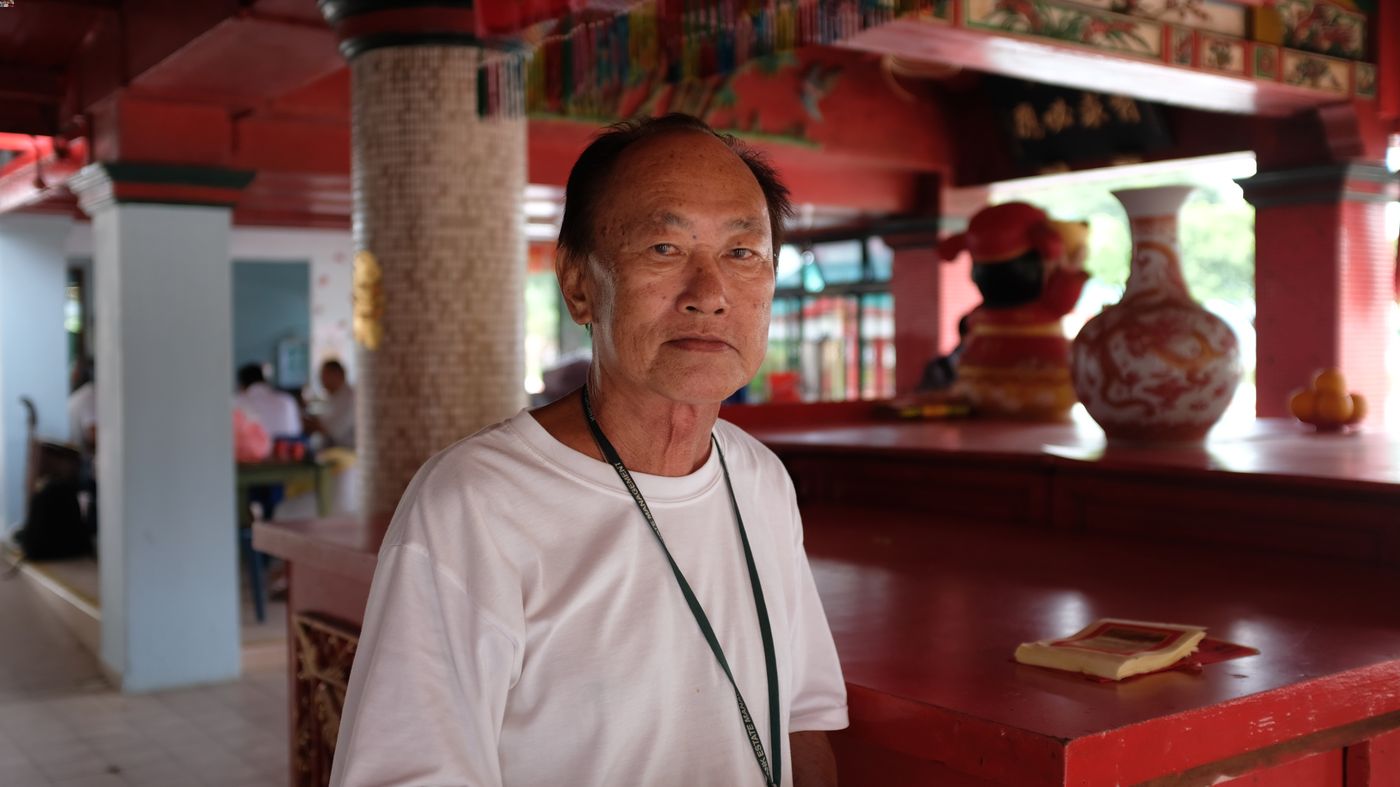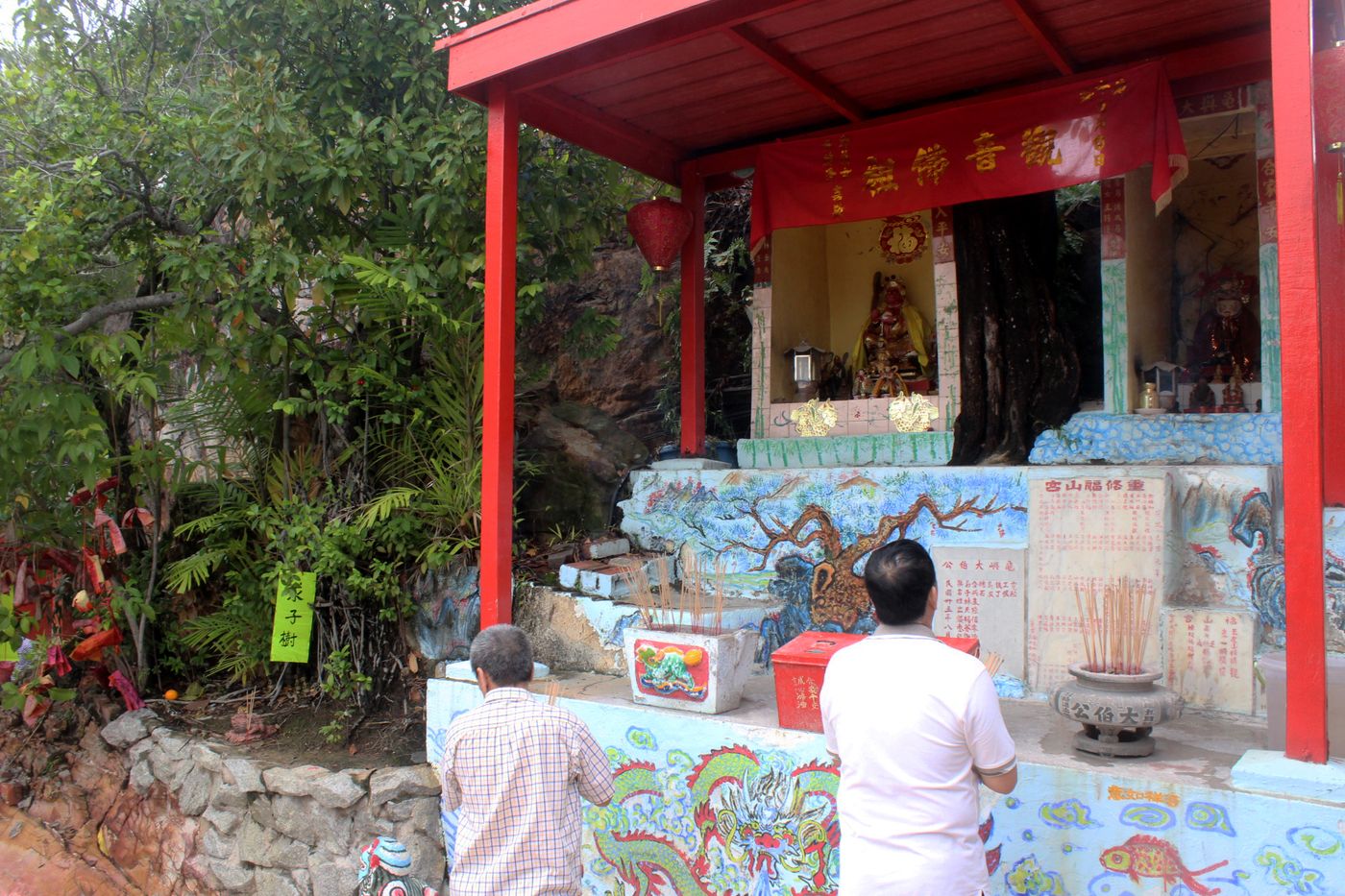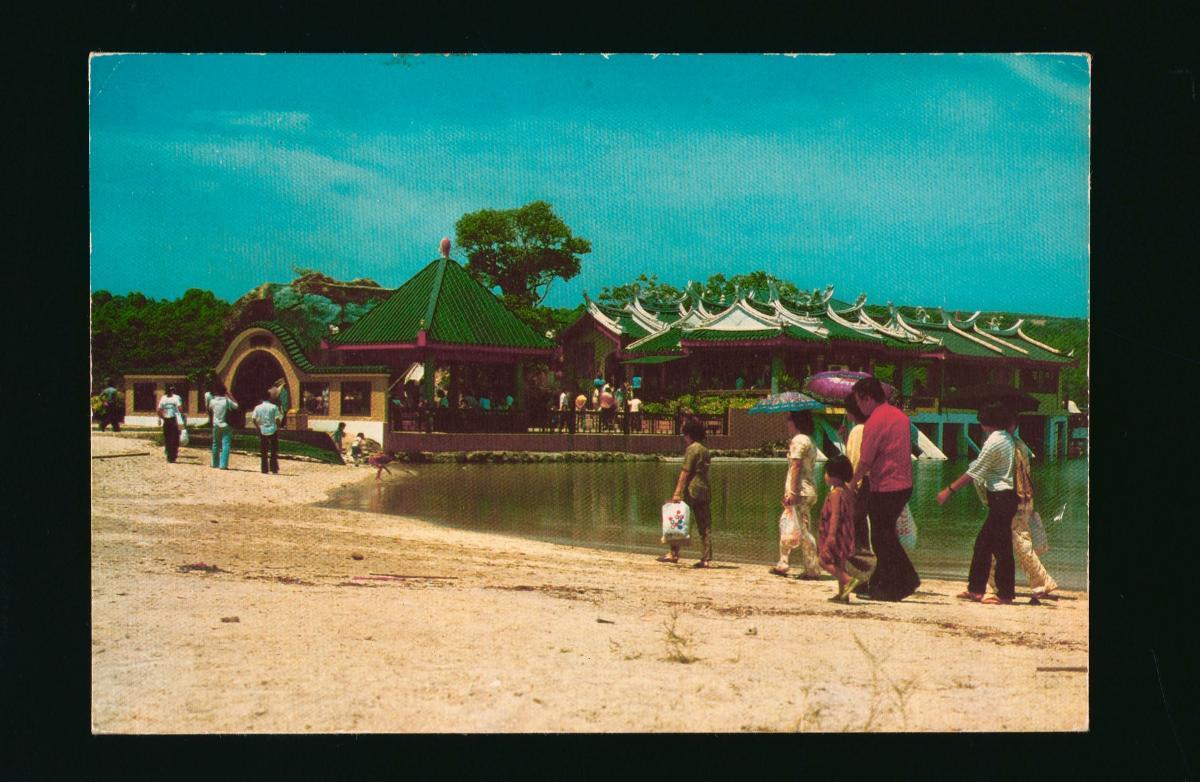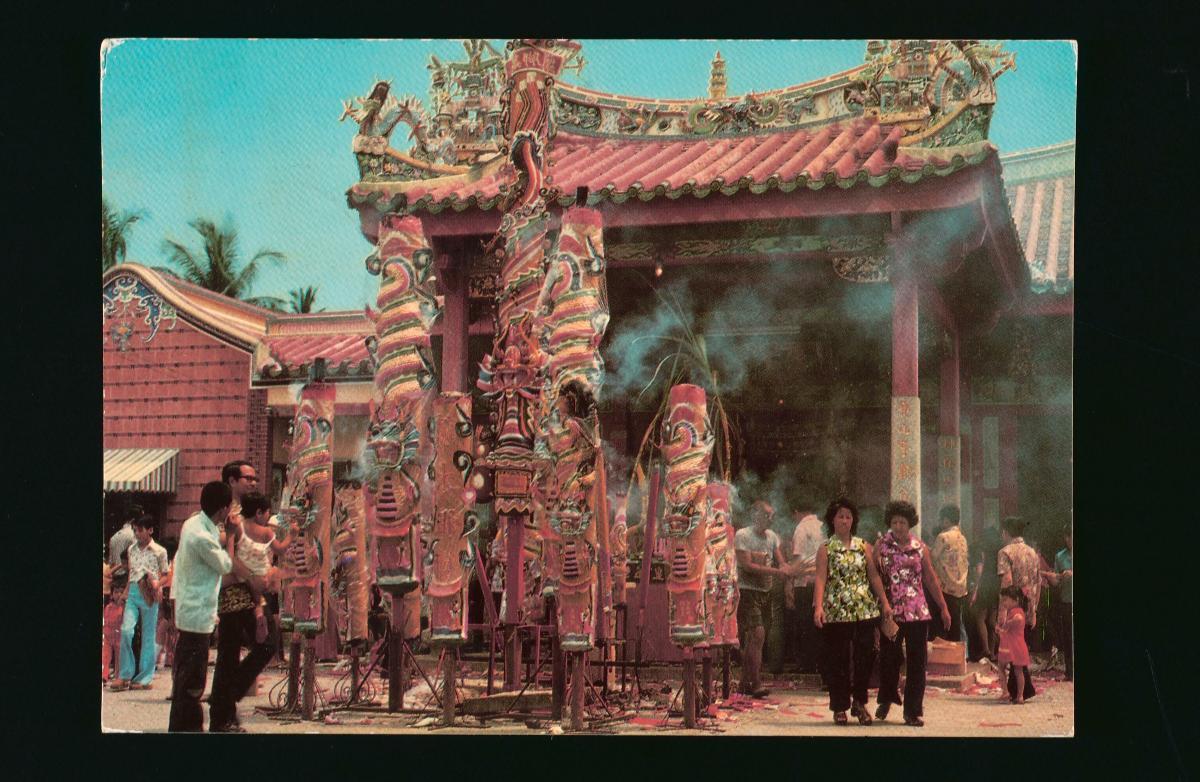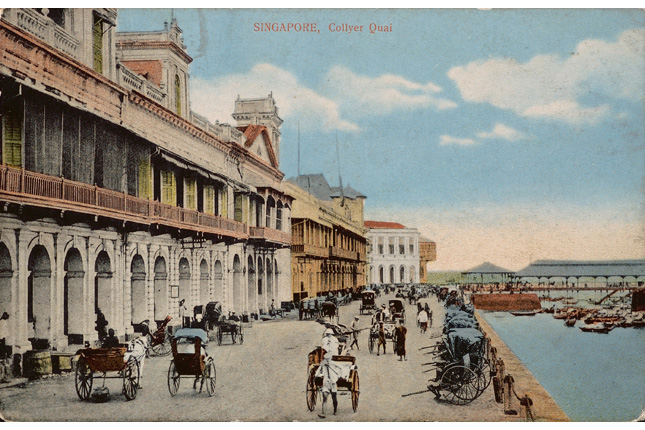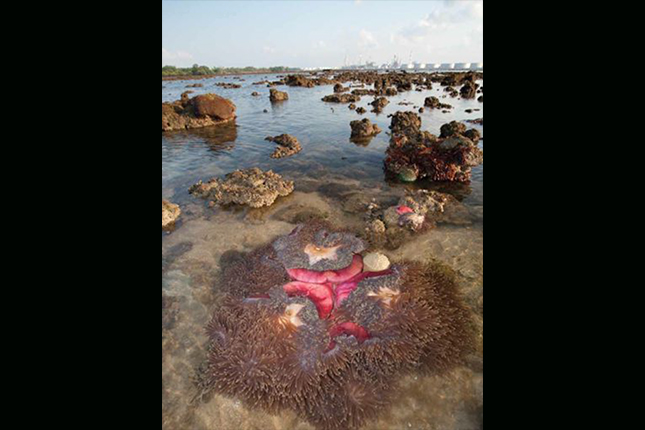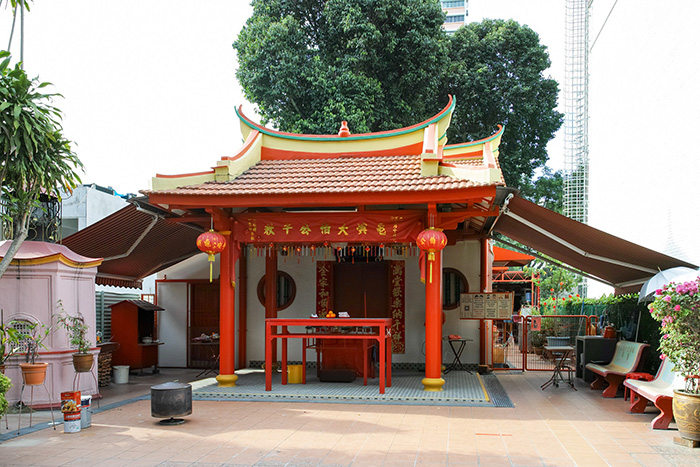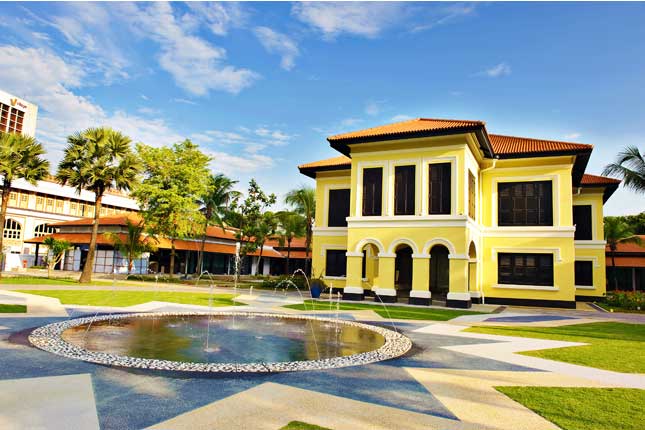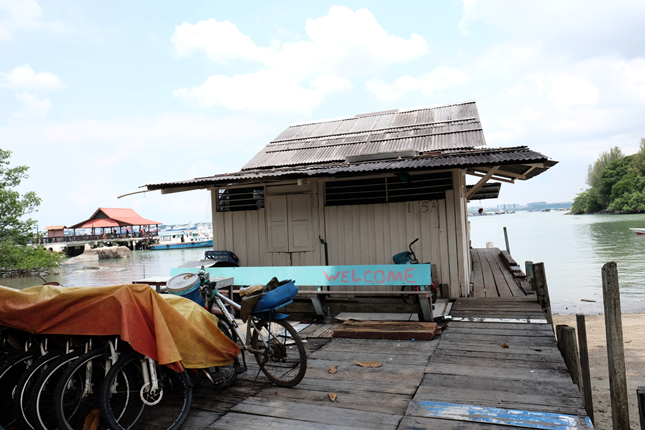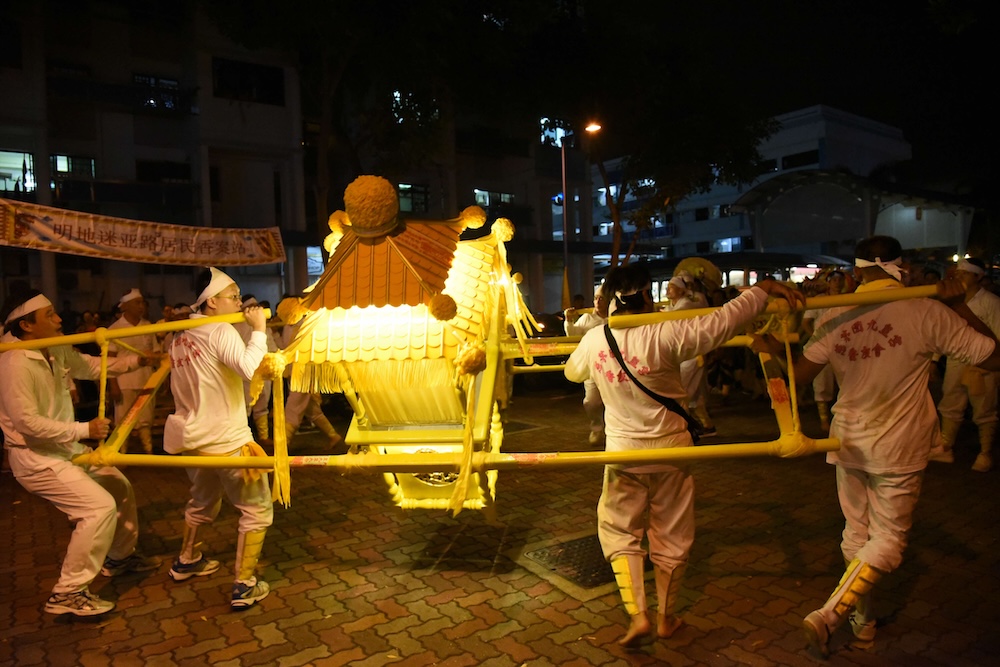Pilgrimage to Kusu Island
Kusu Island is the site of an annual pilgrimage drawing both Chinese and Malay devotees. Meaning “Turtle Island” (龟屿岛) in Chinese and “Peak Island” (Pulau Tembakul) in Malay, Kusu Island has a Chinese temple and three Malay keramat (shrine) for the worship of local deities. Devotees make their pilgrimage primarily during the ninth month of the Chinese lunar calendar, which is considered sacred, as well as being the birthday month of Tua Pek Kong (大伯公, “Grand Uncle” in Hokkien). Tua Pek Kong is also seen as the God of Prosperity, the Merchant God, and the protector of seafarers. It is a prominent deity in the region, although its exact origins cannot be confirmed.
Legends surrounding Kusu Island predating the pilgrimage have also contributed to stories about the island, with common themes being the sacredness of the island and its association with miracles. One story describes how a Malay and a Chinese fisherman, close to drowning when their boat capsized, were saved by a turtle who brought them ashore. The two fishermen then lived on the island peacefully, and hence, Kusu Island became a symbol of racial harmony. Another version tells the tale of how a large turtle saved a group of sailors from drowning by turning itself into an island during the ninth lunar month, hence the name. Yet another version tells of how two holy men, Dato Syed Abdul Rahman (an Arab) and Yam (a Chinese) had meditated and fasted during their pilgrimage to Kusu Island. However, Yam fell ill during the journey and needed food and water. Syed prayed for Yam and a boat appeared with food and water, saving them from their plight. From then on, the two men would visit Kusu Island regularly to give thanks. When they died, they were said to be buried next to each other on the island, and the Chinese Tua Pek Kong temple and a Malay shrine were associated with this tale.
Geographic Location
Kusu Island is located in the south west of Singapore, and is one of the 60 over offshore islands of Singapore.
Originally, Kusu Island was made up of two separate islands linked by a strip of sand at low tide before land reclamation works. The Tua Pek Kong Temple is located on what used to be the smaller island (head of the turtle), while the Malay shrines are located at the peak of what used to be the bigger island (back of the turtle).
Communities Involved
The annual pilgrimage to Kusu Island attracts tourists and devotees from Singapore and overseas, including Indonesia, Malaysia and Thailand.
There are also caretakers who look after the Tua Pek Kong temple and Malay shrines in Kusu Island, a role that have been passed down through generations within the families. As the temple and keramat do not keep records, knowledge of past worship practices and the origin of the pilgrimage have been passed down orally.
Associated Social and Cultural Practices
During the pilgrimage, offerings such as joss sticks, fruit, paper money, and “prosperity cakes” (huat kueh, 发糕) are brought by devotees to the Tua Pek Kong Temple. The temple also houses other gods like Guan Yin (观音, Goddess of Mercy) and Tai Seng Yeh (the Monkey God). Chinese pilgrims will also take part in worship at the Malay keramats. After visiting the temple, devotees climb 152 steps up a hill to visit the Kusu keramat – the shrines of Syed Abdul Rahman, his mother Nenek Ghalib, and sister Puteri Fatimah. At the keramat, blessings by caretakers are chanted in a mixture of Hokkien and Malay, while devotees burn joss paper and other offerings. At both sites, devotees pray for peace, prosperity, and wealth: the temple offers a fertility tree where written wishes can be hung, while stones are tied at the keramat.
Experiences of a Practitioner
At both the temple and keramat, the role of caretaker has been passed down the generations within families. Mr Ishak Samsudin is the third-generation caretaker of the Malay shrine, following in the footsteps of his father and grandfather. Tua Pek Kong Temple’s current caretaker is Mr Seet Seng Huat, who inherited the role from his late parents in 1986. Apart from day-to-day maintenance of the temple’s activities, he ensures that the electricity generator continues to function. These duties resonate strongly with him, as he sees it as a calling to preserve the significance and meaning of Kusu Island for subsequent generations.
With the Tua Pek Kong Temple being independent and unaffiliated with other temples, there has been no clear line of succession for the role of caretaker. Mr Seet remains confident that a family member, out of the many siblings and children he has, will take on this role, and he is happy to see them do so.
Present Status
These days, there are fewer devotees visiting Kusu Island. Older adults find it harder to get there, and the younger generation are less likely to participate in the religious traditions associated with the island. However, children in Singapore schools learn about the religious significance of Kusu Island. In addition, there are more young parents who venture out with their children to explore the sites on Kusu Island, including the lagoons, beaches and turtle sanctuary on the island.
References
Reference No.: ICH-035
Date of Inclusion: April 2018; Updated March 2019
References
Bosco, Don & Sharon, Lei. Island of Legends. Singapore: Colourscan Print Co Pte Ltd, 2016.
Chia, Jack Meng-Tat. “Managing The Tortoise Island: Tua Pek Kong Temple, Pilgrimage, and Social Change in Pulau Kusu, 1965–2007”, New Zealand Journal of Asian Studies 11: 72–95, 2009.
Comber, Leon & Beryl Kwok. Asian favourite stories, Singapore. Singapore: Talisman Pub, 2011.
Hu, Celina C. Golden Legends: Malaysia. Singapore: Heinemann, 1996.
Lim, Charlotte. Attack of the Swordfish. Singapore: Public Education Division. 2005.
Lu Caixia. “The Kusu pilgrimage: An enduring myth.” International Institute for Asian Studies: The Newsletter, 59: 50–51, 2012. http://iias.asia/sites/default/files/IIAS_NL59_4748495051.pdf. Accessed 10 September 2017.
Monteiro, Irene-Anne & Jenny Watson. Favourite Stories from Singapore. Singapore: Shing Lee Books, 1979.




